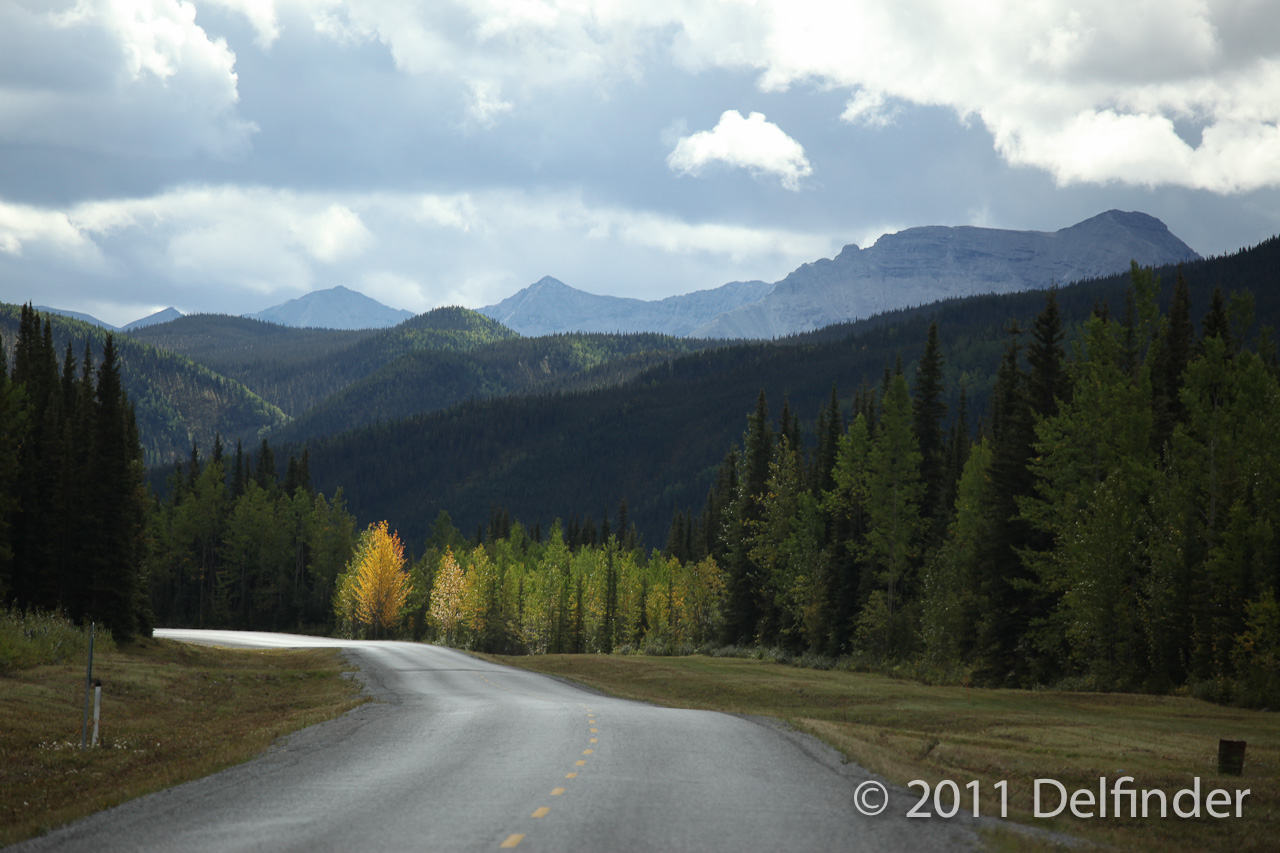 The Alaska Highway runs from Watson Lake, Yukon, to Fort Nelson in British Columbia and leads us through the magnificent mountain scenery of the little known “Northern Rockies”. For 530 kilometers there are no real towns but only gas stations, lodges, campgrounds and plenty of nature. During this trip we saw lots of wildlife just along the highway.
The Alaska Highway runs from Watson Lake, Yukon, to Fort Nelson in British Columbia and leads us through the magnificent mountain scenery of the little known “Northern Rockies”. For 530 kilometers there are no real towns but only gas stations, lodges, campgrounds and plenty of nature. During this trip we saw lots of wildlife just along the highway.
Crazy signs
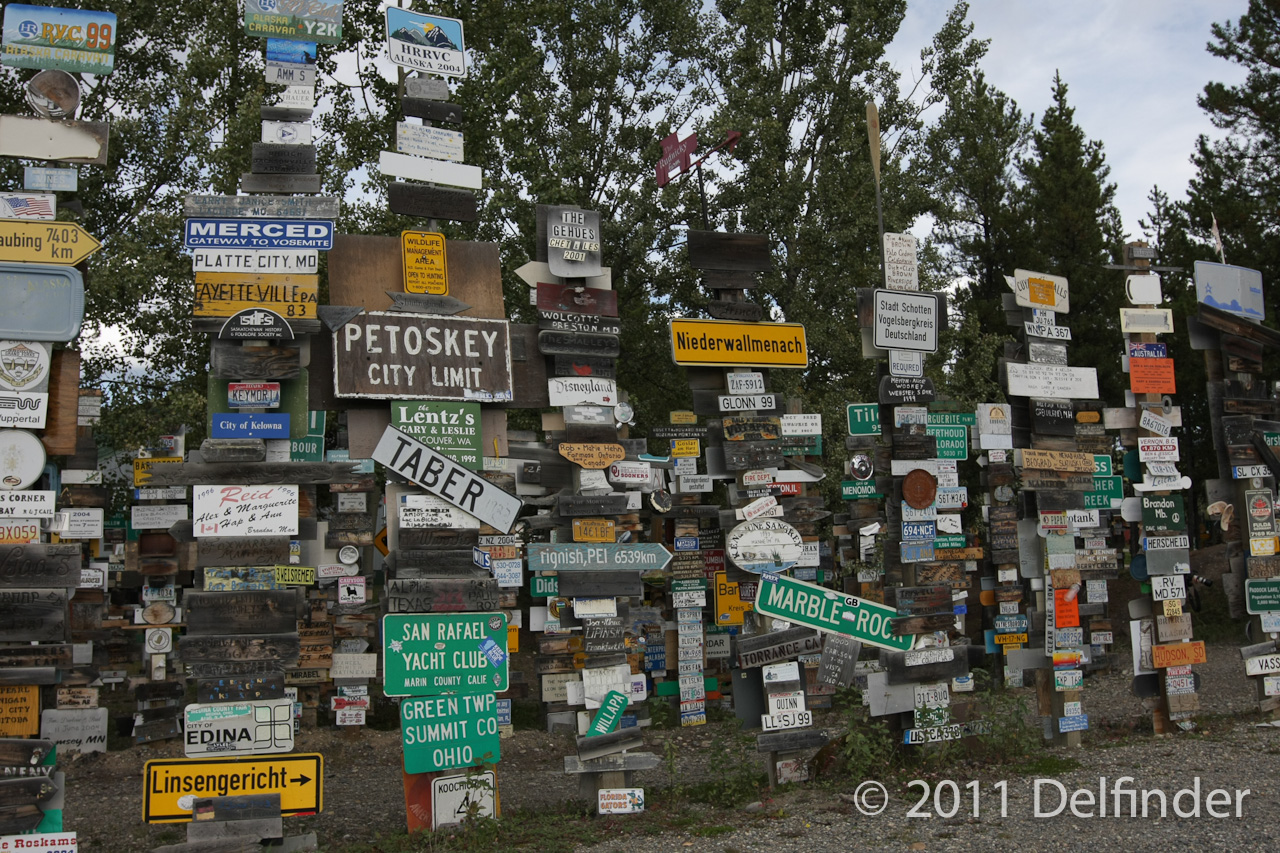 In Watson Lake, the most southern city in the Yukon, it is worth visiting the famous Sign Post Forest. Here, while working on the Alaska Highway, a worker erected a sign pointing the way and stating the mileage to his hometown. Others followed his lead and are still doing so to this day. Anyone who wants to put up a sign from his hometown is welcome. The Town of Watson Lake maintains the site, erecting more posts where the signs can be attached as they are needed. Meanwhile the number of signs has grown to 73,000.
In Watson Lake, the most southern city in the Yukon, it is worth visiting the famous Sign Post Forest. Here, while working on the Alaska Highway, a worker erected a sign pointing the way and stating the mileage to his hometown. Others followed his lead and are still doing so to this day. Anyone who wants to put up a sign from his hometown is welcome. The Town of Watson Lake maintains the site, erecting more posts where the signs can be attached as they are needed. Meanwhile the number of signs has grown to 73,000.
73.000 signs in Watson Lake, Alaska Highway
Caution: bison
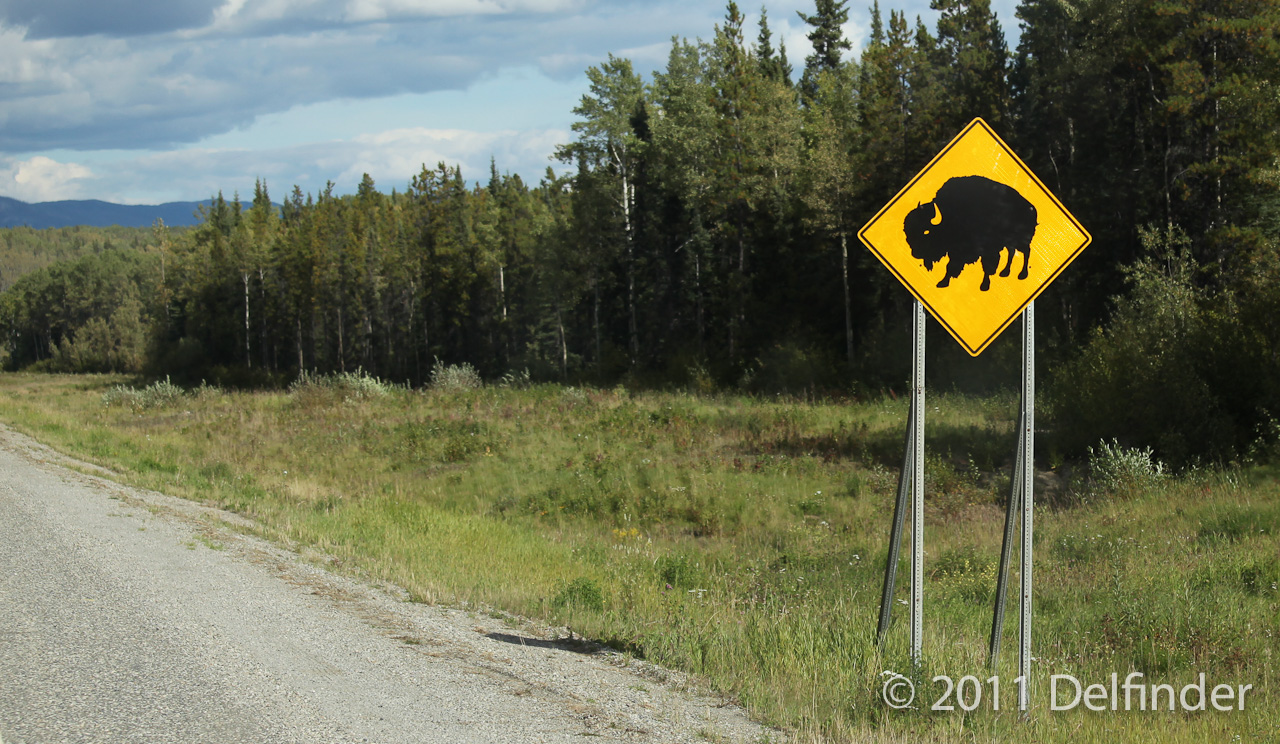 People at the tourist information center in Watson Lake warn us that if there are bison on the road, we should proceed with caution. Along the road traffic signs are warning us as well.
People at the tourist information center in Watson Lake warn us that if there are bison on the road, we should proceed with caution. Along the road traffic signs are warning us as well.
Auffällige Schilder warnen vor Bisons
Traffic signs are warning us for bison
And then it actually happens: we see some bison grazing along the roadside. Between the highway and the forest there are wide open spaces on both sides, which are the ideal spots for grazing for those herbivores. Probably it’s easier for them to graze here instead of in the forest, because of the danger to get stuck between the trees with their horns. As we turn into a parking lot and head for the viewpoint of Whirlpool Canyon, a bison is only a few meters away. It isn’t impressed by our attendance. When we come back from watching the sparkling waters of the Liard River and walk up to our motorhome, the bison is only about 30 meters away. It has noticed us and looks back. We conduct ourselves quietly in the shelter of the branches of a tree and the bull turns around again and proceeds grazing. A powerful animal, it is a wood bison with a huge hump behind his massive head. Head and thorax are covered with a dense coat – as if it were a cape. The belly and hind legs are bare. We observe the animal for a while, take photos and continue our journey.
Nuisance for truckers
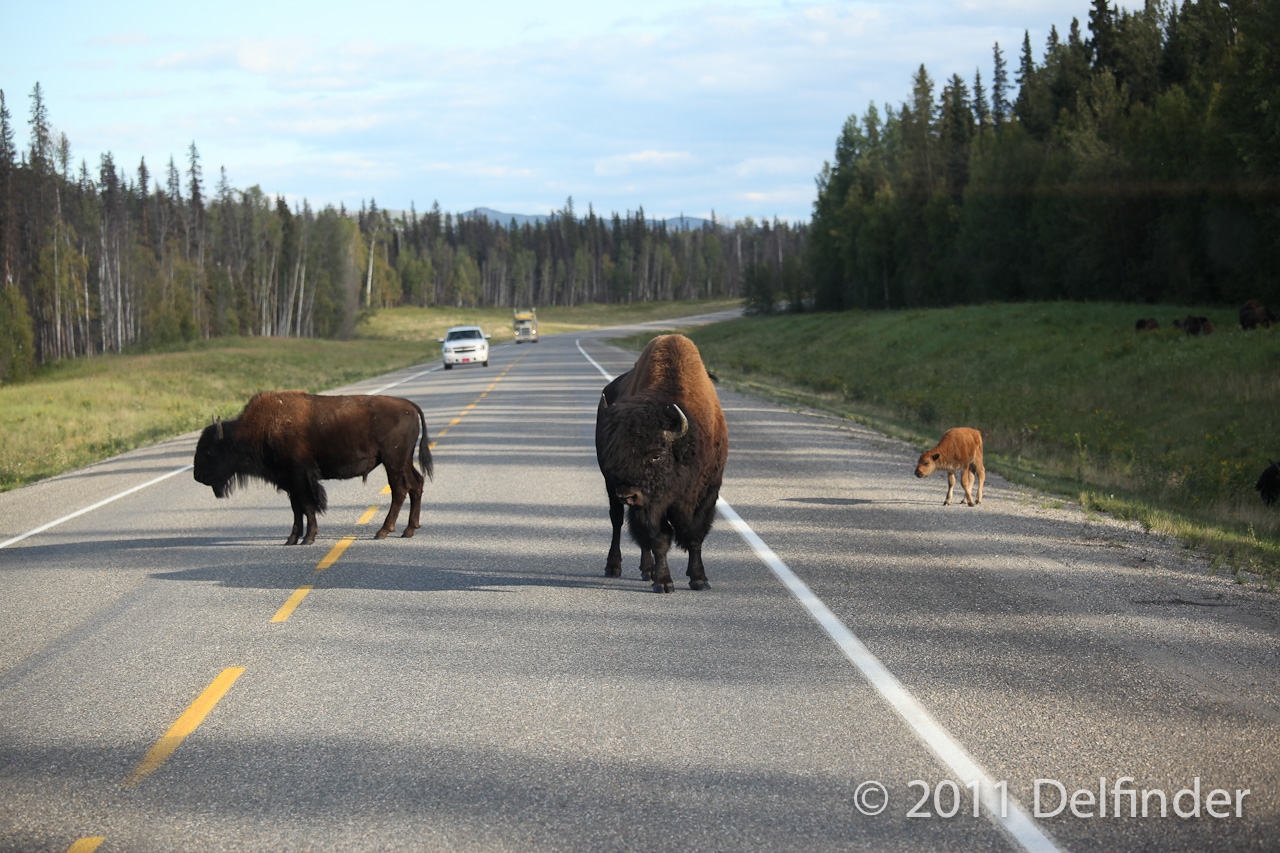 A little further we drive into a herd of about 40 to 50 bison, which are shattered on either side of the highway. We drive slowly and a car from the opposite direction stops as well. Only the truck driver that follows doesn’t seem to be very enthusiastic to see the animals, and maneuvers his truck between a car, a motorhome and the bison. Probably the truckers are tired of the tourists who stop because of the animals. But we are stuck, because right before us a bull accompanied by another younger animal crosses
A little further we drive into a herd of about 40 to 50 bison, which are shattered on either side of the highway. We drive slowly and a car from the opposite direction stops as well. Only the truck driver that follows doesn’t seem to be very enthusiastic to see the animals, and maneuvers his truck between a car, a motorhome and the bison. Probably the truckers are tired of the tourists who stop because of the animals. But we are stuck, because right before us a bull accompanied by another younger animal crosses 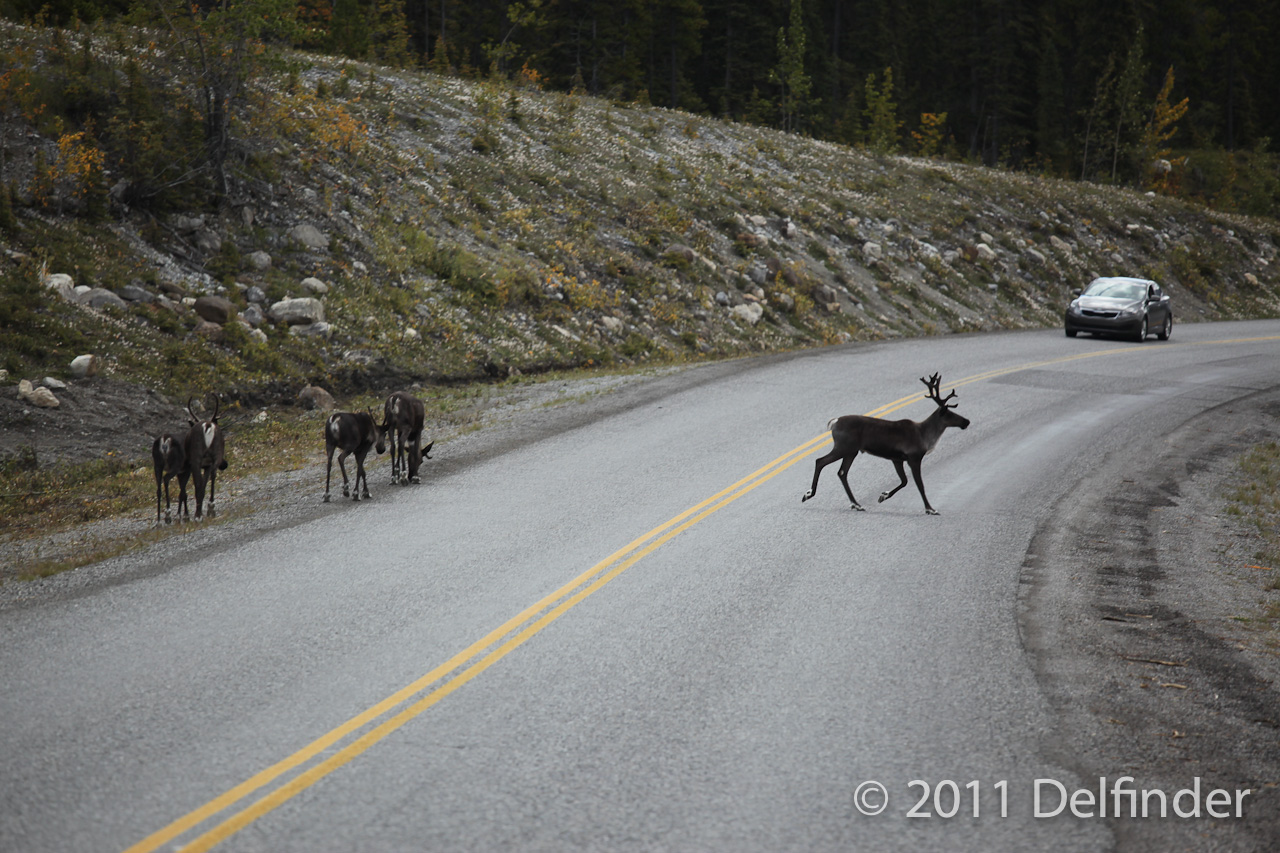 the road. In the middle of the street they decide to stay put. The larger one looks back at us as if to check whether there could be any danger. We are on guard as well and we feel very safe in our motorhome. The other bison just keep eating. There are many young animals, and some are just resting quietly. It’s amazing to be right in the middle of it all.
the road. In the middle of the street they decide to stay put. The larger one looks back at us as if to check whether there could be any danger. We are on guard as well and we feel very safe in our motorhome. The other bison just keep eating. There are many young animals, and some are just resting quietly. It’s amazing to be right in the middle of it all.
Later we read that there are about 250 bison in this area and every year around 20 of them are hit by vehicles.
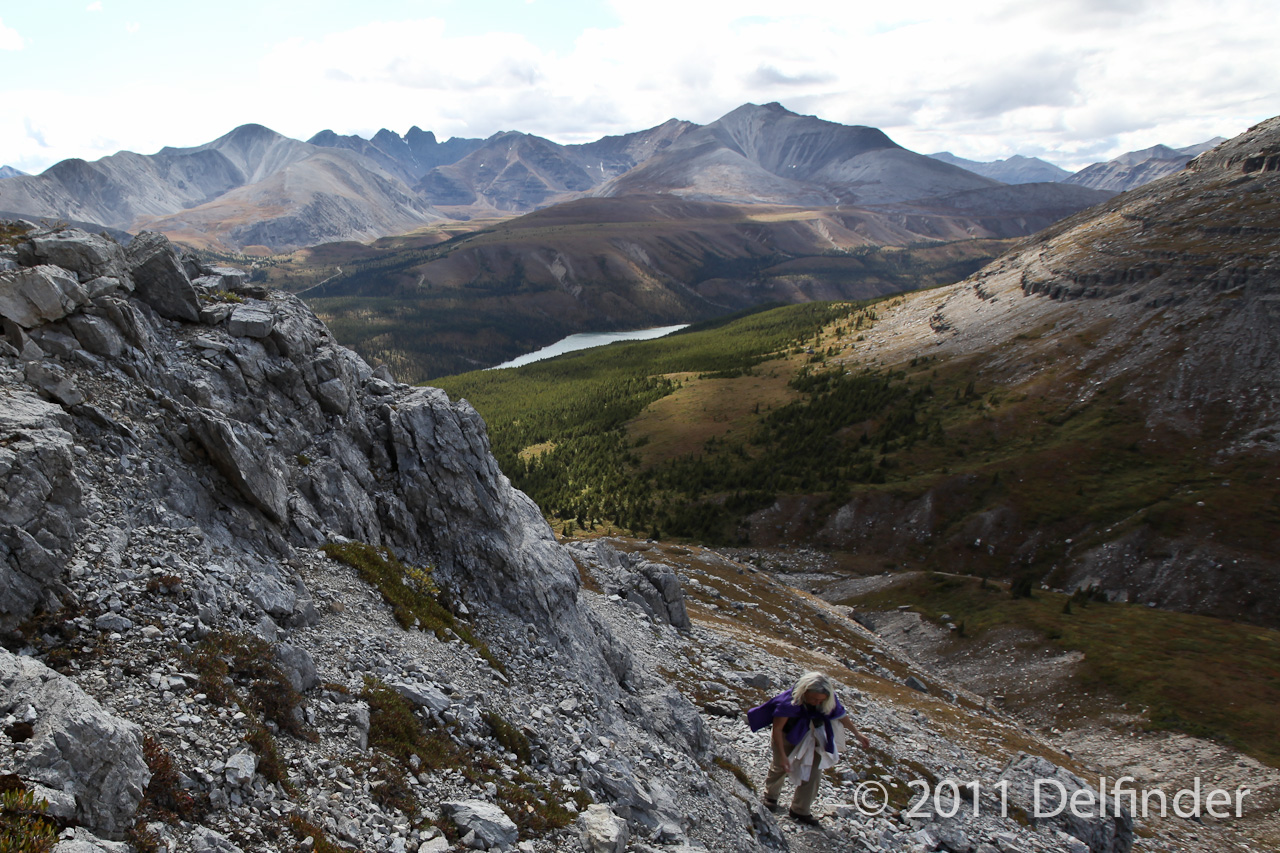 Later that day on our way to “Liard Hot Springs”, we pass various mountain lakes like the Muncho Lake and cross the Summit Pass, the highest pass of the Alaska Highway with 1295 meters, where we hike to the 2014 meters high Summit Peak (see photo gallery). Several times caribou cross the highway.
Later that day on our way to “Liard Hot Springs”, we pass various mountain lakes like the Muncho Lake and cross the Summit Pass, the highest pass of the Alaska Highway with 1295 meters, where we hike to the 2014 meters high Summit Peak (see photo gallery). Several times caribou cross the highway.
Apparently mountain goats and moose live here as well, however, they remain hidden from us. Just before Fort Nelson, a small town with the Alaska Highway Museum, we leave the mountains behind us and dive into our first grain fields.
